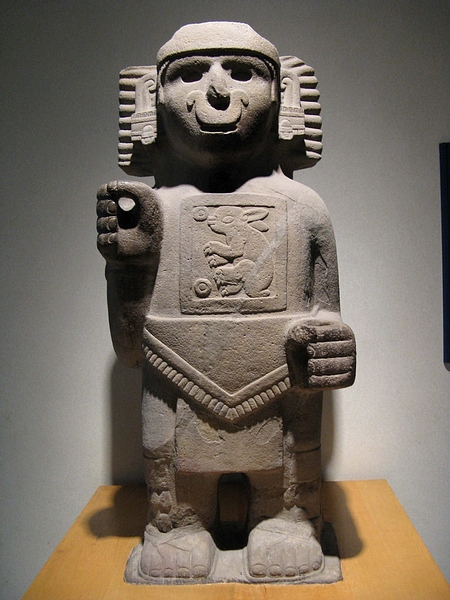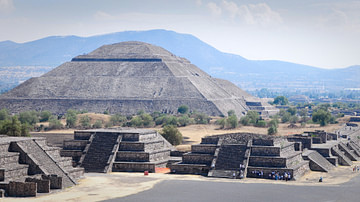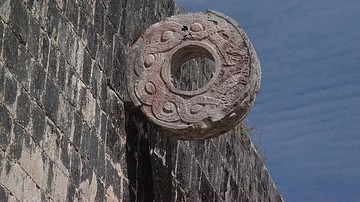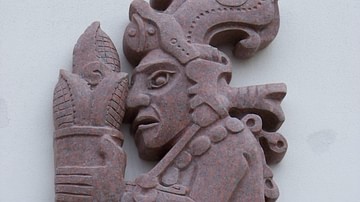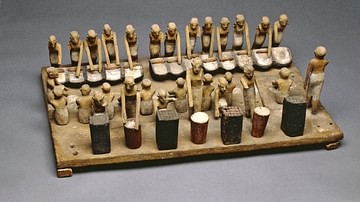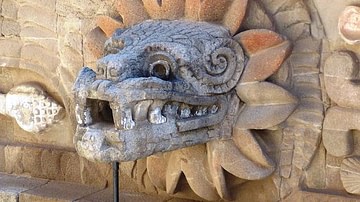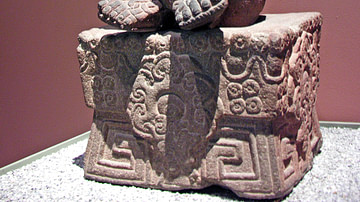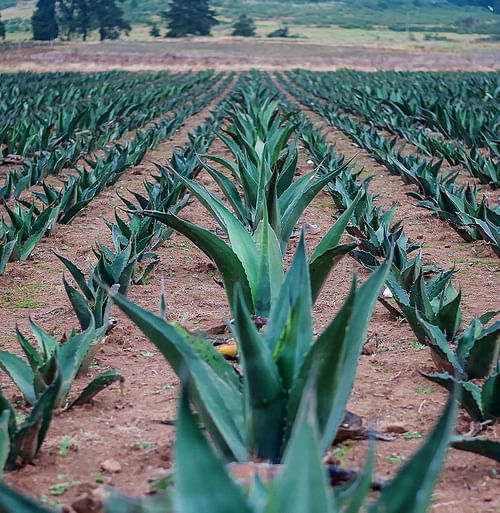
Pulque is an alcoholic drink which was first drunk by the Maya, Aztecs, Huastecs and other cultures in ancient Mesoamerica. Similar to beer, it is made from the fermented juice or sap of the maguey plant (Agave americana). In the Aztec language Nahuatl it was known as octli and to the Maya it was chih. Only mildly alcoholic, the potency of pulque was often increased with the addition of certain roots and herbs.
The drink had its own personified goddess and was featured in episodes of Mesoamerican mythology. Drunk in moderation throughout the region on a daily basis it was served in more copious amounts at important religious festivals and celebrations such as weddings, fertility rites (especially those involving the Aztec god of Summer Xochipilli), and agricultural ceremonies. The substance was not just drunk as the Huastec used pulque as an enema using thin hollow bones; this was a relatively common practice in the administration of hallucinogens in the ancient Americas.
Pulque in Mythology - Mayahuel
The maguey plant, important not just for pulque but also as a source of fibres for weaving, had its own personified deity – a goddess known as 11 Serpent by the Post-classic Mixtecs. In central Mexico the goddess was known as Mayahuel and usually depicted as a beautiful young woman. She was associated with fertility and sometimes referred to as 'the woman of 400 breasts' no doubt in reference to the milk-like sap of the plant. Pulque was also personified as a goddess known as 2 Flower. In addition, the god 3 Alligator was closely associated with the drink.
The consumption of pulque, then, went right back into mythological times and there was, naturally, a myth to explain its invention. The great god Quetzalcoatl was watching humanity one day and noticed that at the end of the working day the people did not dance and sing but, instead, seemed rather miserable. To brighten up their lives Quetzalcoatl decided to give them something which would lift their spirits. Falling in love with a beautiful goddess Mayahuel, Quetzalcoatl whisked her off to Mesoamerica and there, embraced, they turned into a tree with two branches. Now, Mayahuel's grandmother was not best pleased with this turn of events and so, accompanied by a troop of fellow demons (tzitzimime), she attacked the tree, splitting it into two. Mayahuel was then ripped to pieces and eaten by the terrible demons. A heartbroken Quetzalcoatl collected the bits and pieces left of his lover and tenderly buried them. Eventually, these remains grew into the first maguey plant and humans used it to make pulque. In the end, Quetzalcoatl's wish that humanity might benefit from a drink which increased their happiness came to pass.
Another famous myth is when Quetzalcoatl, under the drink's influence, slept with his sister, Quetzalpetlatl. The god's realization and embarrassment on discovering his shameful act the next morning was used as an explanation as to why the god abandoned Tula, his capital. The episode was also a warning to the Mesoamericans that abuse of pulque could carry serious consequences. For this reason the Aztecs were rather more particular about who could drink pulque compared to other Mesoamerican cultures. They reserved its consumption in public as a special privilege for nobles and warriors and imposed penalties ranging from head-shaving, property destruction, and even the death penalty for repeated cases of drunkenness.
The 400 Pulque Gods
There was also a group known as the pulque gods who were almost always males. These were particularly important to the Aztecs who called them the Centzon Totochtin (400 Rabbits) as it was believed a rabbit had first discovered the juice of the maguey by nibbling on a leaf. The mother of the pulque gods was Mayahuel and their father Patecatl. Taking on many forms, their exact significance has been difficult to determine. Many were associated with specific towns, days, and time periods. They were also representative of drunkenness and sexual lust and so wore half-moon nose rings, symbol of Tlazolteotl, the goddess of lust and filth.
As a group the pulque gods were represented as either the god Ome Tochtli or 2 Rabbit. Several pulque gods have been identified as ceremonially buried beneath the Templo Mayor temple at Tenochtitlan, the Aztec capital. Historian Mary Miller suggests this was in homage to the 400 victims killed by the god Huitzilopochtli in Aztec mythology.
Representations in Art
The earliest depictions in Mesoamerican art of pulque are from the great city of Teotihuacan, at its peak between 300 and 550 CE. Here stone relief carvings show masked figures with milky drops falling from their mouths and one mask has a background of maguey leaves.
Monuments set up by the Zapotec civilization (500-900 CE) show scenes from wedding ceremonies where guests are drinking pulque. From the Post-classic period (900-1200 CE) there is a rock painting at Ixtapantongo which is the earliest representation of Mayahuel. She is shown within a maguey plant and holding a cup in each hand, probably containing pulque.
As pulque had a milk-like appearance it was associated with mother's milk and this is evidenced in such artefacts as the Aztec Bilimek Pulque Vessel on which is a scene showing the drink pouring from the breast of an earth goddess. Finally, Mayahuel and the pulque gods appear in illustrations in several colonial-era codices, notably the Mixtec Codex Vindobonensis (sheet no. 25) and on several sheets in the 16th century CE Aztec Codex Magliabechiano.
